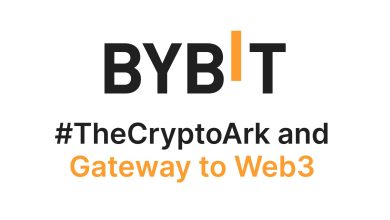Startups, Corporate Innovation and Venture Investing: A Not Too Short Primer on How to Find Winners


It’s New Year’s Eve 2015, and while most people are spending time with family, preparing to go to cross-over service, or writing New Year resolutions they know they aren’t going to keep, three Covenant University graduates are hard at work building what they envision will be the most consequential consumer finance product in Nigeria. Seven days later, they launched Piggybank.ng which eventually evolved into PiggyVest.
For all intent and purpose, PiggyVest was a bet, a bet that people would trust their savings (the single most important component of their financial planning stack) with a random internet company founded by three university graduates who had little or no experience in banking or financial services, a bet that as far back as 2016 (a year after NIBSS Instant Payments (NIP) was launched) that it would be possible to build a service of this magnitude that could both hold customer funds and process disbursements when necessary, a bet that you could somehow take on the big banks who not only had the resources to outcompete you but had stronger and recognizable brands, a bet that there was a world where people would choose a random fintech (at the time) over a stable commercial bank.
If I were evaluating the founders of PiggyVest in 2016, I’d think they were crazy – no one in their right mind would agree to fund such an experiment, it was like hoping that Getafe could somehow beat Barcelona, that the Joker would somehow beat Batman, and that DuckDuckGo (such a weird name for a search engine) could somehow beat Google.
However, they had something up their sleeves that no one else had – they had insights. They knew that there was a world where young people would choose PiggyVest over a bank, they knew the banks paid little or no attention to this customer cohort and they’d be able to coast for years unnoticed, they knew the banks didn’t care so much about user experiences and they could somehow match (and supersede what they offered), and they knew if they built a great product they’d be able to take that market. They knew stuff no one else knew, and they were right. Today, PiggyVest is one of the largest B2C fintechs in Nigeria processing over N835 billion (US$521.8million) annually in payouts for more than 5 million users. That is the nature of innovation, making seemingly random bets that create massive upsides, hinged on some unpopular insight that ends up being correct.
Innovating in Africa
Innovating in Africa can be inherently complex. There’s a school of thought that promotes the copycat model – Africa is evolving, so take what has worked in other developed economies and replicate it here. This was the Rocket Internet thesis that birthed Jumia and Zando, there’s another school of thought that advocates for original thought – look for what should exist within a market and go ahead to build it. This is the thesis behind Interswitch (Nigerians should be able to process card payments across multiple bank ATMs), Paystack (Nigerians should be able to receive money over the internet with little hassle), Remita (Nigerians should be able to process transactions across multiple banks), Transsion Holdings (Nigerians should own affordable smartphones with good batteries and dual sims), Andela (Africans should have access to global technology opportunities) and Chowdeck (Nigerians should be able to order food and get it on time before hunger kills them or the rider eats it). This school of thought has birthed massive upside outcomes within our ecosystem driving new business models and empowering Africans in ways not seen before.
Innovation, however, can be inherently difficult. For one, it’s a bet, a bet that a certain outcome is possible and that you have the capacity to make that a reality. Established companies usually have the bandwidth and resources to make large bets, but they’re exceptionally fragile, so they don’t make them; they’d rather play it safe and leave the future for the anti-fragile rebels and risk-takers fueled by large doses of opium (see venture capital) to make. Some of those bets create massive companies and new paradigms for innovations – Paystack, Flutterwave, Moniepoint, PiggyVest, OPay, etc. while others make great post-mortem articles on Techcabal – ThePeer, Edukoya, LazerPay, and Pivo, but the circle of life continues and each success and failure feeds into a learning loop that makes the ecosystem more robust and resilient.
When certain markets begin to open up and show signs of life, established companies try to play catch-up. This can take years, and by then, those markets are closed up (market winners have already been defined), but they still go at it nonetheless. As a rule of thumb, the best way to tell if a market is exceptionally saturated is if a bank (or any other legacy player) is trying to enter that space. They always come in last when the opportunities are as clear as day (they usually don’t make bets) and come in on a mission to “revolutionize the industry”. with bank transfers and bill payments.
P.s: nothing fundamentally wrong with entering a vertical late btw, Apple is late to almost every market it enters (iPods, iPhones, Apple Watch, etc.)
However, it would be ignorant to assume that established companies don’t make bets (and make successful ones too). For starters, the Safaricom MPesa bet is one of the most profound innovation pushes run by an incumbent. That bet created KES 139 billion (US$1.06billion) in annual revenue last year, contributing more than 40% to Safaricoms entire FY 2024 revenues. MPesa is to Kenya as manna was to the children of Israel – essential, Diamond Bank pioneered cross-branch banking in the 1990s, GTBank drove USSD adoption in 2012, and MTN makes more income from lending than Unity Bank and Providus Bank combined. MTNs Xtratime service produced north of N80 billion (US$ 50 million) in annual revenue in 2023 alone. Incumbents make prescient bets when they layer (ride on existing business advantage and distribution) as against chase (do what’s trendy).
Another thing to pay close attention to is how companies bet. Within every industry, there are three broad innovation cohorts across companies;
There are those who want a certain thing to be true (usually because of how well it aligns with their existing business model) and will hammer down on it and force it down everyone’s throat till it becomes true (or the market tells them they’re nuts), this is the card schemes with contactless payments, this is Nigerian telcos with mobile money (nowhere as aggressive as the card schemes), and this is Linkedin with Linkedin Shorts (or whatever they called that thing).
Then there are those who in all honestly have no point of view and will just chase whatever looks trendy or like the “in” thing either to raise capital or to look innovative, these are all the startups pushing cross-border payments today, this was mobile payments some years ago (a crazy thing to be trying to push now), and this is AI in a couple of months time.
And finally, there are those thinking from first principles about what opportunities exist in the market and how to capitalize on them and scale them. This is PiggyVes with consumer savings, Paystack’s approach to online collections, and Moove Africa.
To be very clear, none of these approaches are inherently bad, there are times when doubling down on what already aligns with your existing business model creates massive outcomes (this is actually what incumbents do best), and there are times when going with what’s trendy is the way (Moniepoint didn’t pioneer agency banking), and there are times when you should think from first principles (Paystack, Interswitch etc.) either way all approaches birth winning companies albeit some more than others.
This article is the first in a multi-part series on Startups, Corporate Innovation, and Venture Investing – Winning in Africa.
Part 1: How to Find Winners
The goal of every venture investor is to find that 10x company that returns their fund and turns them into an investing maverick. Paystack was the 10x company to Venture Platforms, Greentree Investment Company (Ola Browns fund), and a couple of other investors at the time. Moniepoint was to Oui Capital and Novastar Ventures, and Kuda was to SM River (a consortium led by a couple of prominent Indian investors)
However, finding winners can be challenging. Winners don’t always look that way in the beginning (if they did, everyone would fund them) – Moniepoint started as TeamApt, Tosin and his cofounder started off building apps for banks – the main basis for funding them wasn’t so much that they had some revolutionary idea (agency banking wasn’t necessarily new at the time) as it was they seemed like they knew what they were doing, PiggyVest was three university graduates taking a shot at entrepreneurship after trying out a bunch of experiments including PushCV.
Identifying winners is a skill every venture investor needs to develop and hone in on if they’re going to win and make the right bets. However, if your objective is to make venture-sized outcomes, learning to identify winners isn’t enough; you also need to learn what markets to avoid entirely.
Markets to Avoid
There are two key parameters venture investors must pay close attention to when choosing markets to avoid:
Saturated Markets:
When people think of market saturation, the reductive thing that comes to mind is too many market participants. While this might seem like a valid definition for saturation, in the context of technology businesses, this isn’t necessarily the case.
A saturated market isn’t a market where there are many players, a saturated market is a market where the market leaders have already been defined. Technology markets follow a certain trajectory where one, two, or three players capture 80% of the value, while the remaining players (which could be anything from 10 -20 players) hustle for the remaining 20%. This dynamic is true in payment gateways – Paystack & Flutterwave control the vast majority of the market, while the remaining players, including those who claim to be “revolutionizing payments,” tussle for the rest. It’s true in consumer savings – PiggyVest and CowryWise (distant second) own the savings market while others (including super app saving plays from PalmPay, OPay, etc.) tussle for the rest. This is also true in agency banking – Moniepoint and OPay own the majority of the market while others (including those “creating a new paradigm for the actualization of financial inclusion” – whatever that means) tussle for the rest.
What this means is the minute a market has clear market winners, while there may still be pockets of opportunities here and there, it’s usually advisable to steer clear, especially if the objective is to create venture-sized outcomes. But why is that the case?, here’s why:
The minute a market has clearly defined market winners, two things inevitably begin to happen – the virality coefficient works in favor of existing market players and makes sure new users entering the market default to them automatically – if you’re a student who wants to start saving money, there’s a 70% chance you’ll either use Cowrywise or PiggyVest. If you’re a developer who wants to embed payments on an e-commerce website, chances are you’ll go to Paystack or Flutterwave first, and if you want to start a POS business in your area, the chances you’ll use Moniepoint or OPay are very high. This virality coefficient means new market players have an uphill task because the “spirit of the market” is against them.
The second issue is that late entrants almost always end up struggling with low ARPU (average revenue per user) because mature markets tend to have high customer acquisition costs (CAC). When a market is evolving, the chances that people intuitively look for your product because they have a need is high. When a market is mature, viral coefficients and “the spirit of the market” automatically move new customers to existing market leaders when they want to solve certain problems.
As a new entrant attempting to break that movement and slot yourself into the equation, you have to invest a ton of resources into marketing to try and tilt the equation in your favor, and even after that, you’ll probably still capture less than 20% of the market (the spirit of the market will still move users to existing market leaders regardless of your marketing spend). So while your customer acquisition cost is higher because you’re running contrary to the “spirit of the market”, existing market leaders tend to have less customer acquisition cost because the “spirit of the market” is working in their favor.
As a new market entrant in a market with defined winners, your lifetime value may also experience degradation. If you’re trying to acquire a mobile payment user in Nigeria today, more often than not, you’ll face the arduous task of convincing them to leave their existing payment alternatives in favor of your service. Assuming they will leave all their alternatives for you is synonymous with assuming that Arsenal will win the Champions League, neither of them is going to happen (at least not anytime soon). This means the lifetime value of that customer is severely deprecated due to increased optionality as a function of existing market players. This makes being last to market in certain verticals a severely uphill task. Like David Mamet said in the 1992 movie Glengarry Glen Ross – “first place gets a Cadillac, second place gets a collection of kitchen knives, and third place gets fired”.
However, this doesn’t mean there are absolutely no opportunities in a saturated market. The main way to crack a saturated market is to build a product that has a value delta that is so large it pulls customers in your direction. All leading technology companies today won by disrupting someone that was not serious (Netflix – Blockbuster, Apple – Blackberry, Google – Yahoo, etc.), so most technology companies are, by design, careful about sleeping on the wheel.
However, be that as it may, most companies eventually fall into the loop of sustaining innovation (the product gets better marginally) and that gives room for someone with a significantly better product to take the wheels and charge forward (ChatGPT vs Google Search, Chowdeck vs JumiaFood etc.). If you can’t identify an opportunity of that magnitude within a market, it is better to stay put than to run into the market half-armed and fall into irrelevance (but then again, if you’re a startup, you’re already irrelevant, so where are you falling to?).
Markets With Old Guard
All IT companies (not tech companies), banks, and other industry players have one thing in common – they don’t pursue ambiguity, they don’t chase probabilistic opportunities or make bets, they go in when they’re sure there’s gold at the end of the tunnel.
In football, there’s a kind of pass called a through pass, It’s a pass a player makes to another player who is usually already in motion and has some momentum going. The difference between a through pass and a regular pass is in a regular pass you’re playing the ball directly to where the other player is at that instance, however, in a through pass you’re playing the ball to where you believe the other player will be and are betting that his momentum will not just get him there quicker than opposing players, but give him a good forward head start while he runs before opponents catch up to him. This is what a venture investor is trying to do.
Venture investors are trying to do two things – one, identify where the ball is going to be (where the market opportunity is), and two, identify which player has the most amount of momentum to catch the ball and run with it. Because the Old Guard rarely goes to where the ball will be (i.e anticipate market direction), and are more likely to stay where the ball already is (where the opportunity is clearly defined), the active presence of Old Guards in any industry is usually a tell-tale sign that you should stay away from there. Not because of competition per se, but because the market has already become exceptionally ripe and the real winners have taken their share and gone. I’ll be explicit here, the wave of banks entering certain fintech verticals is a clear indicator you shouldn’t be funding companies in those verticals unless there’s a large value delta between what exists on the market today and what they want to offer (and if they can keep that product advantage).
How to Find Winners
Now that we’ve talked about what to avoid, let’s go into what to look out for. I’ve written about this in the past, so I won’t go into too much details here – all venture outcomes fall into three broad categories – Hard problems, Silly Ideas, and Wild Cards. Some opportunities intersect with others, but more often than not they’re in one of these distinct boxes.
Hard Problems:
A hard problem is a market opportunity where everyone is clear on the value of the outcome and fully aware of the potential of bringing that service to life. Hard problems are very conspicuous; they’re not hidden, and they’ve crossed the minds of multiple founders at different points in time, so they aren’t really secrets in the real sense. However, the issue with hard problems is execution. They’re difficult to actually do. The opportunity is clear, but there’s a windy bridge above a 400-meter sharp drop into a river filled with hungry crocodiles standing between you and that opportunity (you get the picture).
Hard problems are high opportunity, low competition markets. Very few people are vying for the prize, but getting the prize is a ton of work. Some good examples of businesses that are a result of hard problems in our market are Interswitch and Paystack. Hard problems require highly intelligent and technical (or well-connected) founders to execute them. If you’re funding a startup going for what looks like a hard problem, you need to pay close attention to the competence of the founding team and whether they have the capacity to take this on.
I was very bullish on open banking in the early days (I still am), I even wrote an entire article on how I believed it would disrupt the card networks if it grew to maturity. Excluding the opportunity for PIS (Payment Initiation Services) open banking created, it also had the potential to create sanity within the fragmented consumer lending market in Nigeria and create a framework for a market leader to emerge, however, none of the startups in that space were able to deliver on that promise, and most of them have pivoted to other business lines.
While, there are many reasons for why that happened (chief being the CBN Open Banking framework didn’t compel banks to provide APIs, it just created a standard for them to comply with if they chose to), the ultimate reason was that Open banking is an extremely hard problem and none of the people taking it up were able to execute. This doesn’t mean that I could have done a better job or none of the founders who chased that market were competent (some of them are extremely intelligent people), there was just a certain skill set (deep stakeholder management) required to take that market that wasn’t available.
P.s: the CBN has announced a roadmap for Open Banking that includes an August 2025 go-live date (i.e. mandating banks to comply with the open banking guidelines). The Open Banking market in Nigeria will look remarkably different in the next few years.
Silly Ideas:
A silly idea is rooted in a non-obvious truth. Silly ideas generally look like bad ideas on the surface – allowing strangers rent a room in your house, trusting your money with a random fintech company named after a pig, etc. but they are etched on hidden insights that random onlookers tend to overlook. Most venture investors miss silly ideas primarily because they have enough sense not to pay attention to them.
Silly ideas are a dime a dozen – a lot of the ideas that have passed through your desk that you thought were crazy, are actually crazy. However, once in a while someone proposes something crazy and gets it right, and when they do, they can build really consequential businesses from it. Teams building Silly Ideas don’t necessarily have to be exceptionally technically competent, they, however, need to be able to double down on their unique insight and make the most of it. Silly ideas are High opportunity, low-competition markets, because no one in their right mind would chase them (unless the founders of course).
When evaluating a founder with a Silly Idea, the big question to ask is what insight is driving his approach, and finding out if he can test that insight for validity, if he can and it proves authentic, you should go in. Silly Ideas usually don’t take off as rockets, but when they do (and if the founders are competent enough to steer the ship effectively and develop compounding market advantages) they can become really meaningful businesses.
Wild Cards:
Wild card markets are high opportunity, high competition. People know there’s an opportunity there, and a couple of players are already making attempts to capture it, but market winners haven’t been clearly defined yet. This was the state of agency banking and offline acquiring when Moniepoint took it. There were existing market players (not market winners), and everyone was vying for the top spot.
Founders who chase wild cards MUST have the boldness to try new things and the ability to execute. Wild card markets are more about your ability to execute properly than anything else. If they can’t execute, they will NOT win. Founders chasing Silly Ideas may be slow with execution (provided they haven’t exposed themselves and people still think they’re crazy), and still win, but founders in wild card markets cannot – they are synonymous with a soldier who has four minutes to eat a hot plate of Eba before going back to his post, no one knows why he’s standing to eat, but he’s the only one that can see what is pursuing him.
Identifying winners in an emerging market is a skill that has to be honed over a long period of time. You won’t always be right, but you’ll have a higher chance of finding Alpha than most people.
Conclusion
At any given time, a plethora of founders will try their hands at solving certain problems and building new companies. Most of these companies will fail (some more badly than others), but only a handful will evolve into highly consequential businesses. Your ability to both identify with as little variance as possible who the winners will be, and double down on them, is what separates high-value and Midas touch investors from the rest.
Inspired By The Holy Spirit



